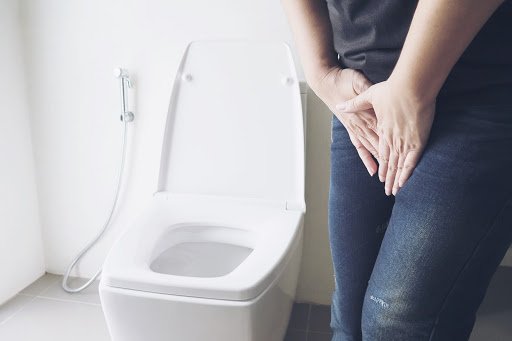Kegel exercise is a form of pelvic floor exercise that involves squeezing and relaxing muscles in the pelvic and genital areas. And now what are pelvic and pelvic organs?
Pelvic organs include the bladder, uterus, small intestine, and rectum. You can improve and maintain your bladder and bowel control by increasing the strength, endurance, and correct function of these important pelvic muscles. Kegels can be beneficial throughout life, and you might want to begin doing them during pregnancy or after your baby is born, when pelvic floor muscles often need to be strengthened. The good news is that you don’t need to join a gym to train these muscles. Kegels can be done discreetly as a part of your daily routine. How should I start with it?

Ideally, your pelvic floor is almost always active both contracting and releasing throughout all daily activities, while you sit, stand, use the loo, or even when you switch sides when you sleep. The first task is to identify your pelvic floor muscle. Once you understand how to find your pelvic floor muscles and the know steps to perform a Kegel, you can do these exercises literally anywhere and without anyone even knowing that you are exercising.
To identify your pelvic floor muscles, you can try these steps.
- Go to the bathroom. While you pee, stop the flow midstream and hold it for 3 seconds.
- Then relax, allowing the flow of urine to continue.
- Repeat it if possible.
If the above steps don’t work. You can imagine that you are sitting on a marble and pretending to try to pick up the marble with your vagina by sucking it in with your vagina. Or you can also insert a clean finger into your vagina and squeeze your muscles as if you were holding in urine. If you feel a tightening around your finger, you’ve got the right muscles lady! The muscles you feel ‘lifting’ inside of you when you are trying these activities are the same ones you strengthen during Kegel exercises.
While it may take a few tries to find the right muscles to tighten or squeeze, if you stick with it, you’ll become a pro in Kegels in no time. Now that you know how to identify these important muscles, it’s necessary to incorporate Kegel exercises into your daily routine for their tremendous benefits.
Benefits of Kegel Exercises In Pregnancy
The benefits of doing Kegel exercises especially during pregnancy and after giving birth are many. Here are some of those –

- Improved bladder control – Many women experience leaking urine during pregnancy or after having given birth when they laugh, sneeze, or even generally when they have the urge to pee. This is called stress incontinence. The bladder control decreases with vaginal delivery, as well as with having multiple children. Kegels can help prevent or treat conditions like urinary incontinence as well which is when you feel the strong urge to pee before you can get to the bathroom.
- Reduced risk of fecal incontinence – This is a condition that causes you to leak stool before you could make it to the bathroom. Kegels can help strengthen the rectal muscles to help in preventing this as well.
- Strengthening pelvic organ – Normal delivery or vaginal childbirth is one major cause of pelvic organ prolapse (when the uterus, urethra, and/or bowel sag down into the vagina). This is because pregnancy and vaginal childbirth weaken the pelvic floor muscles and they don’t provide enough support for the pelvic organs. Kegels help a lot in strengthening your muscles.
- Strengthening the pelvic floor muscles during pregnancy also helps you develop the ability to relax and control these muscles in preparation for labour and birth.
- It improves blood circulation to your vagina and pelvic floor and helps to increase sexual arousal. It also makes it easier for you to reach orgasm and vaginal lubrication.
Read on to find out how to have painless childbirth. In the postpartum period, Kegels can help heal perineal tissues, which are stretched during vaginal birth.
Tips For Doing Kegel Exercise

To get the most out of doing your Kegels, keep these tips in mind:
- Don’t make a habit of doing your Kegels while you urinate, as doing this may prevent your bladder from fully emptying thereby increasing the risk of urinary tract infections (UTIs).
- Don’t strain or hold your breath, and keep your abdominal, buttock, and thigh muscles relaxed.
- Don’t get excited if you are able to find your pelvic muscle in the first go itself and start to overdo your exercises. After starting to do these exercises, it can be normal to feel some soreness around the pelvic area, but if you feel pain, stop and consult your doctor.
- Doing these exercises regularly is important. If you find yourself forgetting, you can download the Mindandmom app that reminds you to do your Kegels and guide you through different training sessions.
- If you still feel that contracting the pelvic floor is impossible to start with or find it tricky to locate the right muscles consult your doctor. They may recommend biofeedback training, which helps check which muscles are being contracted, or electrical stimulation, which uses painless electric currents to contract the correct muscles.
Kegels are your little secret — no one will ever know when you’re working hard on your pelvic floor muscles. Don’t get frustrated if you’re nowhere close to that goal when you start: Quality is much more important than doing a bunch of Kegels incorrectly. And remember, these are muscles like any other in your body. With time and consistent, mindful work, they can only get stronger.


useful content for pregnant ladies and women’s
Thanks for your appreciation